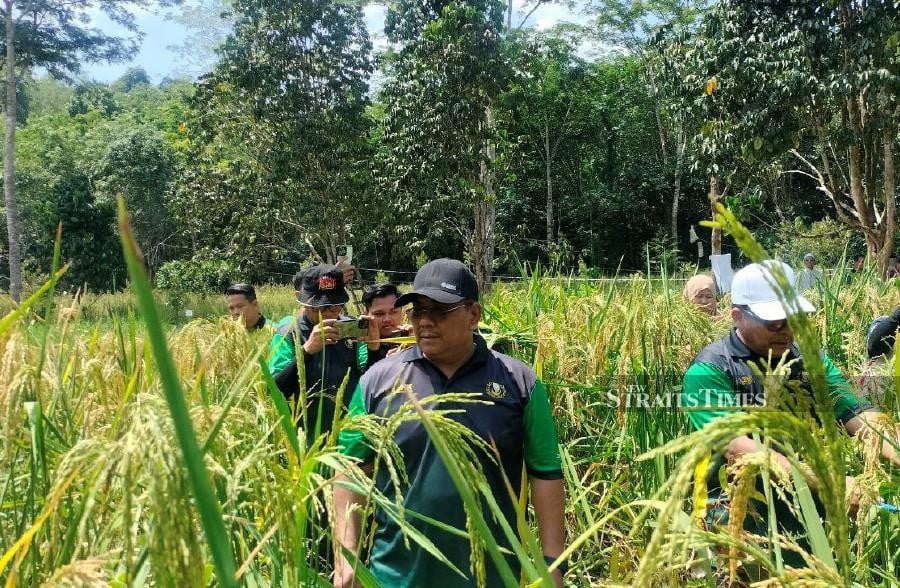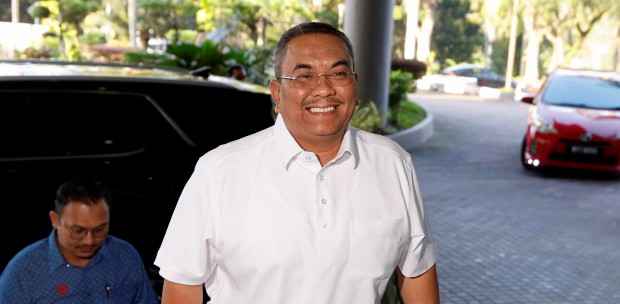ALOR STAR: Kedah government has approved the proposed underground water catchment for Langkawi to meet the tourism island's long-term demand.
Menteri Besar Datuk Seri Muhammad Sanusi Md Nor said the state government through the Kedah State Water Resources Board (LSANK) has approved the proposal mooted by the federal government in 2018.
Sanusi said the Japanese International Cooperation Agency (JICA), which acted as the project consultant, has identified a suitable site in Padang Matsirat, Langkawi.
"The project will be modelled after underground water catchment facilities commonly developed in Japanese islands.
"If the project is materialised, Langkawi will be the first island in Malaysia to have an underground water catchment facility," he told reporters after attending the Hari Raya open house hosted by Kedah State Secreatary Datuk Seri Norizan Khazali here today.
Sanusi added that he has instructed LSANK to arrange a work visit to three underground water catchments facilities in Japan to conduct technical studies on the concept.
"The state Water Supply Committee chairman and the technical team will be sent to carry out a detailed study on the underground water catchment facilities in Japan," he said.
In January 2020, then prime minister Tun Dr Mahathir Mohamad had announced that the government was exploring underground water catchments as alternative water resources for Langkawi.
Dr Mahathir, who was also Langkawi member of parliament, said the underground water catchments aimed to cope with unusual dry spells and increased demand up to 2040.
Last month, state Public Works, Natural Resources, Water Supply and Environmental Committee chairman Mohamad Yusoff @ Munir Zakaria informed the state assembly that the National Water Research Institute of Malaysia has carried out a study on the pilot project.
He was reported as saying that the project, expected to costs about RM453 million with production capacity of 50 million cubic litre of water, will begin by 2028.
On a related development, Sanusi said the consultant appointed to carry out integrity survey on the submerged water pipeline from mainland to Langkawi is expected to submit the report to the state government soon.
"The assessment was done on the thickness on the pipeline to decide whether it is still suitable for repair works, if it is possible to install clamp to plug leakages.
"However, we are not ruling out the possibility that the pipeline is beyond repair as there are 23 leaking spots and some stretches of 7km along the pipeline have the most leak spots," he said.
Sanusi said the state government would discuss on the findings with the Ministry of Energy Transition and Water Transformation on the next course of action.
"The current repair work on the leaked pipeline is being funded by the RM50 million loan obtained from the federal government.
"If the amount is insufficient based on the final findings by the consultant, we will apply for an additional loan from the federal government," he said.
Meanwhile, Sanusi said water supply in Langkawi is under control despite Malut Dam has reached a danger level due to the prolonged dry spell.
Checks on the National Water Services Commission (Span) showed that Malut Dam reserves as of today has dipped to 29.50 per cent, which sits below the danger level of 29.99 per cent Another dam in Langkawi, Padang Saga Dam water reserves has slipped to warning level with remaining reserves of 39.35 per cent.
Meanwhile, one of the four dams in Kedah mainland, the Muda Dam has reached warning level at 35.69 per cent reserves.
The other three dams — Ahning Dam, Pedu Dam and Beris Dam are still at normal level with 88.65 per cent, 70.64 per cent and 78.27 per cent reserves respectively.





